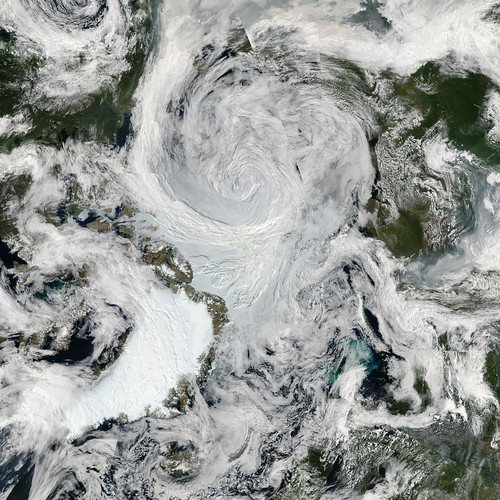In winter 2004, the volume of sea ice in the central Arctic was approximately 17,000 cubic kilometres. This winter it was 14,000, according to CryoSat. However, the summer figures provide the real shock. In 2004 there was about 13,000 cubic kilometres of sea ice in the Arctic. In 2012, there is 7,000 cubic kilometres, almost half the figure eight years ago.
Neven managed to get a clarification from Dr Laxon about these figures, here. He said "you may assume that our last data points are for ON11 and FM12. "
Immediately I discount the February/March figures, which the Guardian presumably state as winter, I do this because the PIOMAS domain is much larger than the Cryosat 2 area, so winter figures are not comparable. With regards the October/November figures, as far as I can tell the two systems cover almost the same area of ice at these periods, the peripheral ice outside the Cryosat 2 domain, but within PIOMAS's, is thin this early in the freeze season, so should not add much error due to peripheral seas PIOMAS covers but PIOMAS does not.
So what is the agreement between the two systems? I've calculated the PIOMAS average for the whole of October and November of 2004 and 2011, although the ICESat data window is smaller than this, the Cryosat period is unknown, so it seemed like the most conservative way to compare.
| ON 04 | ON 11 | ||
| PIOMAS | 12.280 | 6.851 | |
| Cryosat 2 | 13.000 | 7.000 |
The results are close, it surprised me how close. This can only be taken as indicative, despite the close agreement just two data points are not enough to be satisfyingly sure. Furthermore Dr Laxon has cautioned about the figures for Cryosat 2 being preliminary. However what if we take this evidence as one part of a larger picture.
PIOMAS is well validated against the Submarine thickness data in the Data Release Area, also against ICESat, on which the ON04 figures released by the Crosat 2 team are based. The question remains - Is the recent volume loss an artefact of the PIOMAS model, or is it real?
The denialists try to keep people's attention on single facts, and away from the overall picture, the last thing they want is to have to ackonowledge the volume loss and its implications. The overall picture is that not only does PIOMAS show massive and accelerating volume loss, but so does the US Navy's (pdf). What matters here is that the free running climate models are underestimating change in terms of extent/area, while the assimilating models, PIOMAS and the NPS model, are showing substantial volume loss. PIOMAS is validated against past data and agrees well (Schweiger et al 2011), now we have PIOMAS agreeing well with a peek view of the Cryosat data. ICEsat showed that the volume loss is due to multi-year ice loss (Kwok et al 2008), so does PIOMAS. Furthermore we have three new records for sea ice area in five years, is it significant that two of those records have been in the last two years? Is it a coincidence that these latest records have been in years without weather particularly conducive to ice melt, after PIOMAS has shown, in 2010, the near annihilation of multi-year ice? To claim that all this evidence (and more I'll discuss later) is pointing in the same direction by accident is, to put it bluntly, a load of bollocks.
Kwok et al, 2008, Thinning and volume loss of the Arctic Ocean sea ice cover: 2003–2008.
http://rkwok.jpl.nasa.gov/publications/Kwok.2009.JGR.pdf
Schweiger et al, 2011, Uncertainty in modelled sea ice volume.
http://rkwok.jpl.nasa.gov/publications/Schweiger.2011.JGR.pdf
